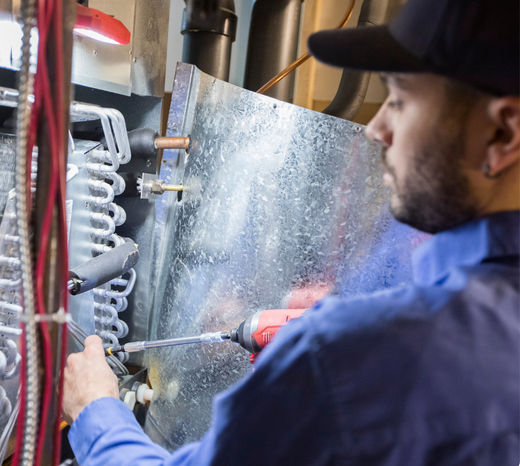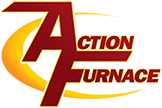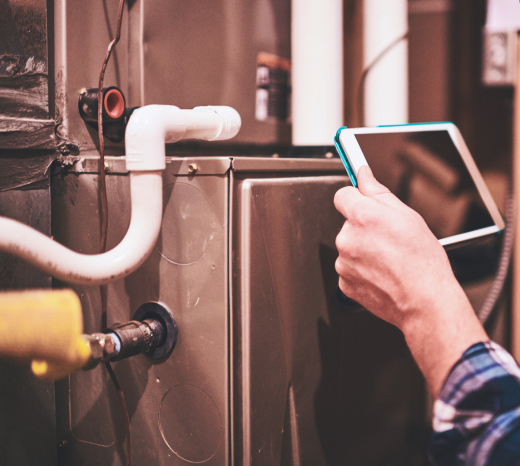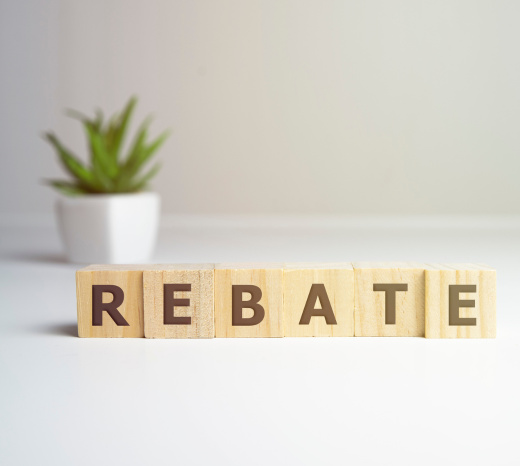As winter steadily approaches, your home’s heating system becomes top of mind. And as you find yourself getting ready for the chill, you might find...

As winter steadily approaches, your home’s heating system becomes top of mind. And as you find yourself getting ready for the chill, you might find yourself wondering: “how does my furnace actually work?”
In today’s blog we’ll go over typical heating system setups, equipment types and how they work to keep you warm and cozy. We’ll also go over the importance of regular maintenance and prompt repairs to keep everything working as it should.
Read on and find the answers to your burning questions!
A Typical Home HVAC Setup
When people say “furnace” what they are typically referring to is the system in place that heats their home. While your furnace is likely sitting down in your utility room, know that the system that heats your home is actually a combination of appliances that work in conjunction with one another.
The two most common types of furnaces are natural gas and electric. And most Calgary, Edmonton and Red Deer homes will have a standard HVAC setup, with a furnace and a thermostat.
The thermostat measures the temperature of the ambient air surrounding it. When it reads an air temperature lower than what it has been set to regulate, it sends a signal to the unit to turn on.
Once the furnace has received the signal from the thermostat to turn on it will take in air via its intakes, heat the air up, and then send it throughout your home via your duct system.
A Slightly More Elaborate Home HVAC Setup
While nearly all homes in Alberta will have the basic thermostat/furnace combination (not including homes that are heated with alternate sources, such as radiators or solar heating), many feature other components that work in conjunction with the furnace/thermostat to regulate temperature and indoor air quality.
In addition to a furnace and thermostat your home may also have:
Humidifier
Used to regulate the humidity of the air inside your home, a humidifier can greatly increase air quality. Alberta (Calgary, in particular) is a very dry province, and a humidifier offers many benefits including: preventing hard wood floors or wood furniture from warping/cracking from dehydration, and preventing dry skin and hair.
Central air conditioning
Central air conditioning helps keep your home cool in the summer using the same air intakes and ductwork as your furnace. Your AC system also consists of an outdoor unit that houses the evaporator coil where refrigerant helps cool the air before being recirculated through your home.
Air filtration
While nearly all furnaces come with a filter installed, many homes also have separate air filtration systems that improve the indoor air quality. A common option here is a UV air purifier combined with a premium air filter, to help remove microscopic particles and bacteria while the filter takes care of the leftover particulates.
The Basics Behind How Your Furnace Works
Let’s say you have your thermostat set to 22°C. The thermostat will regulate the air temperature by engaging the furnace whenever the temperature drops below your specified setting. When a modern furnace engages a few things happen:
- First, the signal from the thermostat is received – Many programmable thermostats will make a “clicking” sound when the signal has been sent.
- Fuel is then sent to the burners – At the heart of a gas furnace are burners, designed in such a way so as to maintain an even, controlled flame.
- Once ignited, the furnaces internal sensors check to verify that all burners are lit – If a burner has not lit the entire mechanism will shut down and wait a predetermined period of time (varies based on each furnace) before attempting to reignite.
- The burners heat a device called a heat exchanger – A heat exchanger more efficiently warms air (compared to the burners on their own).
- A blower engages to circulate air over the heat exchanger – Once the heat exchanger has reached its operating temperature the blower motor is engaged, circulating air that has been sucked in through cold air returns. This air is forced over/through the heat exchanger and then sent throughout the home.
- A network of ducts directs the air throughout the house.
It’s important to note that the process for electric furnaces is nearly identical, but instead of burners an electric furnace uses resistance coils/tubing to create heat.
Modern, high-efficiency furnaces are far more efficient at this process compared to older furnaces. High-efficiency furnaces save energy with less heat waste, using new heating technology and components. High-efficiency furnaces have an AFUE of at least 90%, while older furnaces typically top out at 80%.
Today’s furnace models also utilize a series of fail safes and safety mechanisms designed to protect both your home and the furnace from failure.
Keep Your Furnace Running Properly
The Most Thorough Tune-Ups
A proper furnace tune-up will help your furnace run efficiently and helps prevent costly repairs and full-blown replacements. Plus an Action Furnace tune-up can help you save up to 12% on your monthly heating bills.
Prompt Repairs
As furnaces age, repairs will become more frequent. So it’s important to schedule a repair the minute you notice an issue. Whether it’s lack of heat, strange noises, ignition issues or thermostat problems, these problems will only get worse the longer they sit. So call Action Furnace right away!
Why Choose Action Furnace?
Why choose our team to help you with heating system installation, repair or tune-up? Well, we’ve been Alberta’s comfort leader since 1975.
We also pride ourselves on straight-forward pricing, our fully-stocked service trucks, and our 5-Star customer service. Our commitment to quality doesn’t end after your service. This is why we have thousands of 5 star reviews from happy homeowners in Calgary, Red Deer and Edmonton.
If it’s time to replace your furnace, you can trust one of our Home Comfort Advisors to give you the best equipment options, properly sized for your unique needs.

Common Questions About Furnace Replacement & Installation
How long does furnace replacement take?
No two installations are exactly the same. Several factors impact the timeline of a heating system
install. These factors include:
- The type of equipment being installed.
- The space we are working in to install your furnace. Cramped spaces can increase
installation time. - Ease of access to installation areas.
No matter the job, we’ll always work to complete your installation as soon as possible.
How do I know I need a new furnace?
You may need a new furnace if your current furnace is:
- Over 12 – 15 years old
- Frequently needing repairs
- Not keeping your home warm enough
- Increasing your energy bills
What warranties come with my new furnace?
Our exclusive line of heating systems come with a 12 year warranty that covers both parts and labour. We make it easy for you to enjoy total peace of mind when heating your home.



